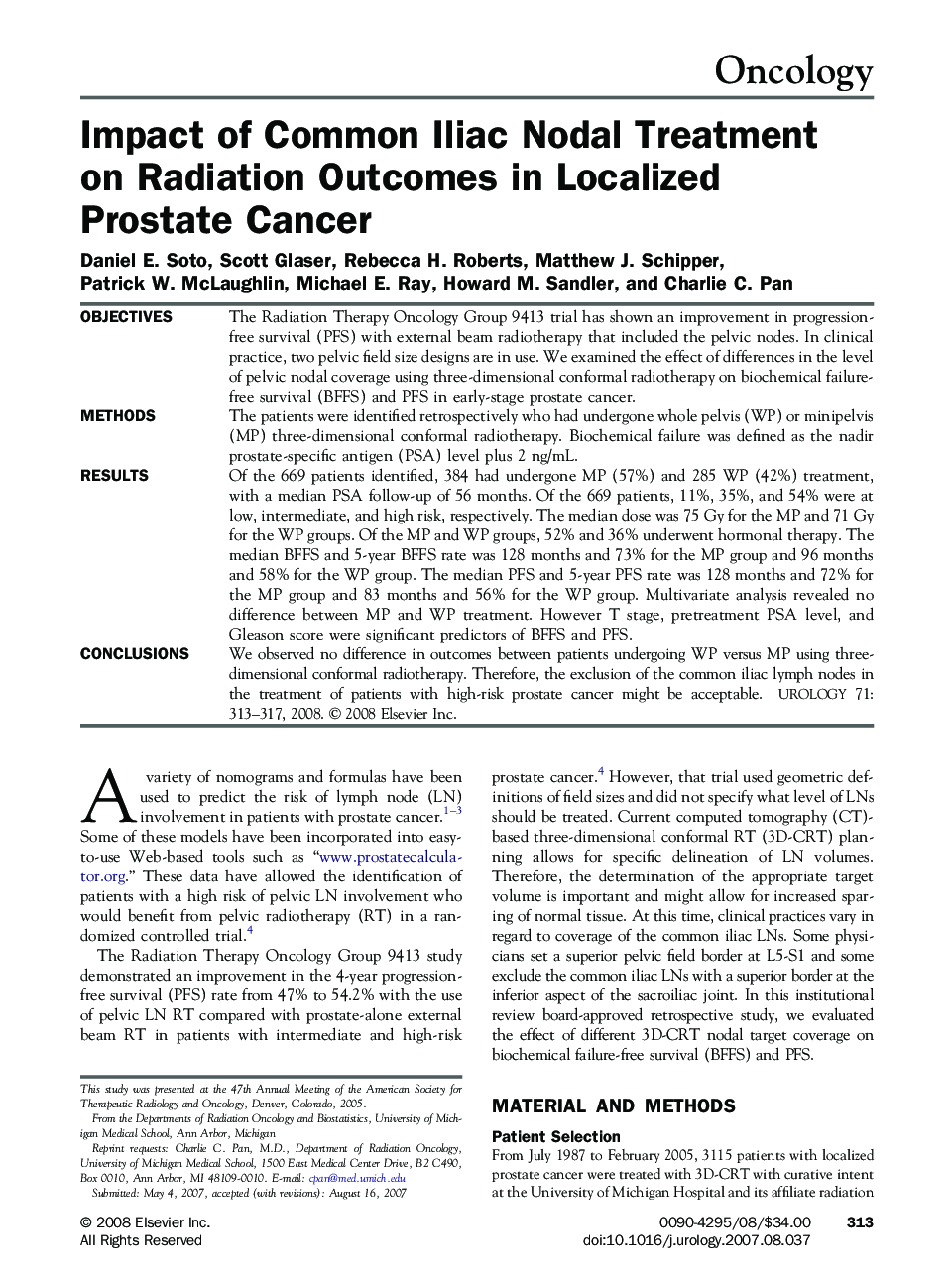| Article ID | Journal | Published Year | Pages | File Type |
|---|---|---|---|---|
| 3903493 | Urology | 2008 | 5 Pages |
ObjectivesThe Radiation Therapy Oncology Group 9413 trial has shown an improvement in progression-free survival (PFS) with external beam radiotherapy that included the pelvic nodes. In clinical practice, two pelvic field size designs are in use. We examined the effect of differences in the level of pelvic nodal coverage using three-dimensional conformal radiotherapy on biochemical failure-free survival (BFFS) and PFS in early-stage prostate cancer.MethodsThe patients were identified retrospectively who had undergone whole pelvis (WP) or minipelvis (MP) three-dimensional conformal radiotherapy. Biochemical failure was defined as the nadir prostate-specific antigen (PSA) level plus 2 ng/mL.ResultsOf the 669 patients identified, 384 had undergone MP (57%) and 285 WP (42%) treatment, with a median PSA follow-up of 56 months. Of the 669 patients, 11%, 35%, and 54% were at low, intermediate, and high risk, respectively. The median dose was 75 Gy for the MP and 71 Gy for the WP groups. Of the MP and WP groups, 52% and 36% underwent hormonal therapy. The median BFFS and 5-year BFFS rate was 128 months and 73% for the MP group and 96 months and 58% for the WP group. The median PFS and 5-year PFS rate was 128 months and 72% for the MP group and 83 months and 56% for the WP group. Multivariate analysis revealed no difference between MP and WP treatment. However T stage, pretreatment PSA level, and Gleason score were significant predictors of BFFS and PFS.ConclusionsWe observed no difference in outcomes between patients undergoing WP versus MP using three-dimensional conformal radiotherapy. Therefore, the exclusion of the common iliac lymph nodes in the treatment of patients with high-risk prostate cancer might be acceptable.
